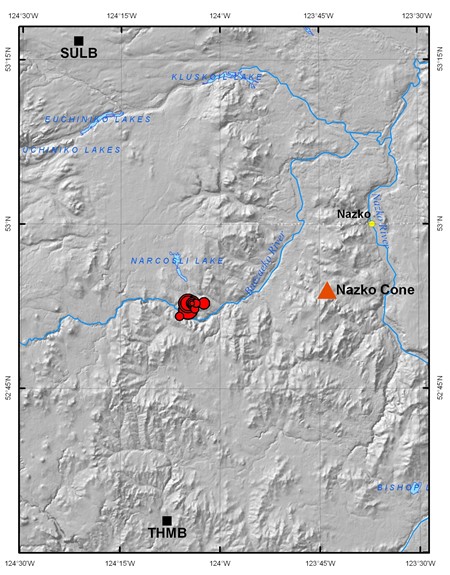Scientists Still Gathering Quake Info Southwest of Prince George
By 250 News

Map (courtesy Natural resources Canada) shows area of "swarm" of quakes, west of the Nazco cone, and south of Narcosli Lake
Prince George, B.C. - Scientists are still in the area west of the Nazko Cone, ( about 100 km west of Quesnel) monitoring the recent earthquakes which have been taking place about 25 kilometers below the surface of the earth.
As was first reported on Opinion250 more than two weeks ago ( see Earthquakes Shudder Region Southwest of Prince George) the first of what scientists are now calling a "swarm" of small earthquakes hit the region October 9th.
Eight microearthquakes of magnitude 2-3 occurred on October 10 and 11, and more than 100 tremors of less than magnitude 2 have occurred between October 10 and October 18.
None of these quakes have been felt by people. Analysis of these seismic data indicated that the earthquakes were occurring about 20 km west of Nazko Cone, at approximately 25 km beneath the earth’s surface.
The cause of this localized increase in seismic activity is unclear. In order to more easily pinpoint the location and depth of future tremors, Natural Resources Canada personnel are currently in the Nazko Cone area installing additional monitoring equipment. They are hoping to have more accurate data by the end of this week.
The Nazco Cone is a dormant volcano in the Anahim belt, and last erupted about 7 thousand years ago. Scientists do not think there is any worry of any eruption being imminent.
Previous Story - Next Story
Return to Home










Cheers